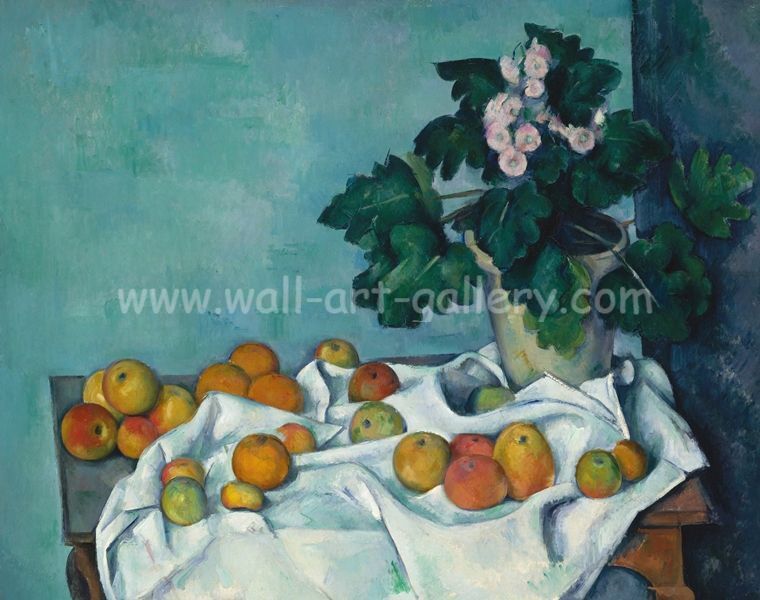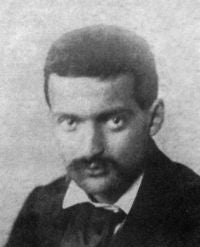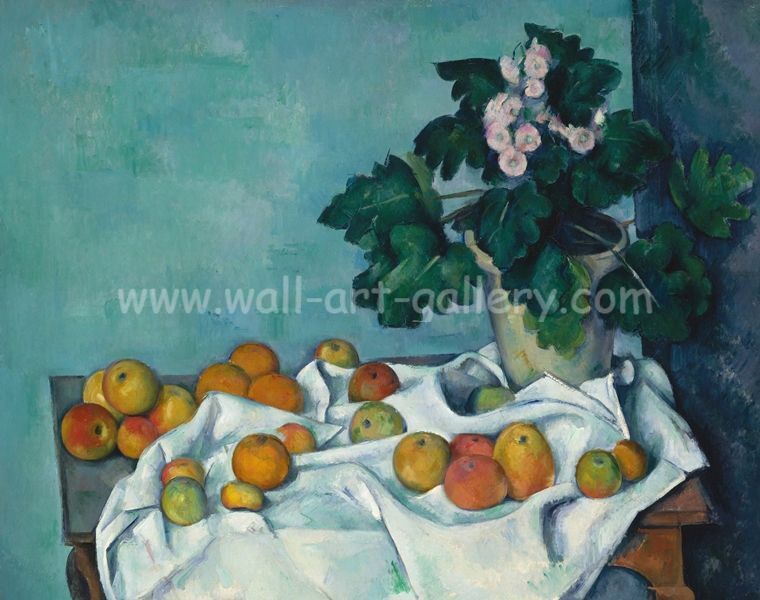180402 Paul Cezanne Paintings
180402 Paul Cezanne Paintings
Artist: Paul Cezanne
Product ID: 180402
High standard prints on artist-grade 100% cotton canvas
We print to scale and no cropping or alteration is done
FREE shipping, NO extras, and NO surprises at checkout!
Couldn't load pickup availability
No PayPal account? No problem! You can still checkout with PayPal as a GUEST using your credit or debit card.Go ahead
Before you buy, please click to see IMPORTANT notes about your order:
Before you buy, please click to see IMPORTANT notes about your order:
1. The watermark (www.wall-art-gallery.com) which appears on the left-side image will not print on the finished canvas.
2. We ship in 3-5 business days, and it typically arrives within 21 days at the most.
3. No P.O. box address, please. Shipments must be made to a physical street address along with your phone number as requested by the express carrier.
4. As shipping cost is calculated by volumetric weight, we believe that is more cost-effective for you to order just the art print (rolled canvas) and have your canvas stretched locally. If you cannot, then we are pleased to do it for you.
5. International orders might be subject to import duties and taxes, such as VAT and others, assessed by your country’s authorized departments, and are due upon delivery or could be added right now by your card issuer/bank. In any case, however, it is neither determined nor collected by wall-art-gallery.com.
6. Unstretched canvas will be finished with an additional 2.5cm (1") blank border on each side for stretching and framing locally. If you prefer to have a black border instead of an image wrap border, you can use black fabric tape to finish the sides.
7. Unstretched canvas will be covered with a protective wrap and rolled inside a secured mailing plastic or cardboard tube. For small sizes, however, less than 20” inches (50 cm), the canvas might be shipped flat between two protection sheets, inside a tight cardboard or bubbled mailing envelope.
8. Stretched canvas will be wrapped around 0.75” or 1.5” thick (based on canvas size) wooden stretcher bars to end up with a “gallery wrap” border, which is the highest professional grade of wrapping. The canvas then gets covered with a protective wrap, placed inside a tight cardboard box, and then shipped to you with all the hanging kits, ready to hang.

Get to know more about this artwork and buy with confidence!

About The Artist: Paul Cezanne
Paul Cézanne, French (1839-1906)
Paul Cézanne was a French artist and Post-Impressionist painter whose work laid the foundations of the transition from the 19th-century conception of artistic endeavour to a new and radically different world of art in the 20th century.
Cézanne is said to have formed the bridge between late 19th-century Impressionism and the early 20th century's new line of artistic enquiry, Cubism. Cézanne's often repetitive, exploratory brushstrokes are highly characteristic and clearly recognizable. He used planes of colour and small brushstrokes that build up to form complex fields. The paintings convey Cézanne's intense study of his subjects. Both Matisse and Picasso are said to have remarked that Cézanne "is the father of us all".
The Cézannes came from the commune of Saint-Sauveur (Hautes-Alpes, Occitania). Paul Cézanne was born on 19 January 1839 in Aix-en-Provence. On 22 February, he was baptized in the Église de la Madeleine, with his grandmother and uncle Louis as godparents, and became a devout Catholic later in life. His father, Louis Auguste Cézanne (1798–1886), a native of Saint-Zacharie (Var), was the co-founder of a banking firm (Banque Cézanne et Cabassol) that prospered throughout the artist's life, affording him financial security that was unavailable to most of his contemporaries and eventually resulting in a large inheritance.
His mother, Anne Elisabeth Honorine Aubert (1814–1897), was "vivacious and romantic, but quick to take offence". It was from her that Cézanne got his conception and vision of life. He also had two younger sisters, Marie and Rose, with whom he went to a primary school every day.
At the age of ten Cézanne entered the Saint Joseph school in Aix. In 1852 Cézanne entered the Collège Bourbon in Aix (now Collège Mignet), where he became friends with Émile Zola, who was in a less advanced class, as well as Baptistin Baille—three friends who came to be known as "Les Trois Inséparables" (The Three Inseparables). He stayed there for six years, though in the last two years he was a day scholar. In 1857, he began attending the Free Municipal School of Drawing in Aix, where he studied drawing under Joseph Gibert, a Spanish monk. From 1858 to 1861, complying with his father's wishes, Cézanne attended the law school of the University of Aix, while also receiving drawing lessons.
Going against the objections of his banker father, he committed himself to pursue his artistic development and left Aix for Paris in 1861. He was strongly encouraged to make this decision by Zola, who was already living in the capital at the time. Eventually, his father reconciled with Cézanne and supported his choice of career. Cézanne later received an inheritance of 400,000 francs from his father, which rid him of all financial worries.
In Paris, Cézanne met the Impressionist Camille Pissarro. Initially, the friendship formed in the mid-1860s between Pissarro and Cézanne was that of master and disciple, in which Pissarro exerted a formative influence on the younger artist. Over the course of the following decade, their landscape painting excursions together, in Louveciennes and Pontoise, led to a collaborative working relationship between equals.
Cézanne's early work is often concerned with the figure in the landscape and includes many paintings of groups of large, heavy figures in the landscape, imaginatively painted. Later in his career, he became more interested in working from direct observation and gradually developed a light, airy painting style. Nevertheless, in Cézanne's mature work there is the development of a solidified, almost architectural style of painting. Throughout his life he struggled to develop an authentic observation of the seen world by the most accurate method of representing it in paint that he could find. To this end, he structurally ordered whatever he perceived into simple forms and colour planes. His statement "I want to make of impressionism something solid and lasting like the art in the museums", and his contention that he was recreating Poussin "after nature" underscored his desire to unite observation of nature with the permanence of classical composition.
Cézanne was interested in the simplification of naturally occurring forms to their geometric essentials: he wanted to "treat nature in terms of the cylinder, the sphere and the cone" (a tree trunk may be conceived of as a cylinder, an apple or orange a sphere, for example). Additionally, Cézanne's desire to capture the truth of perception led him to explore binocular vision graphically, rendering slightly different, yet simultaneous visual perceptions of the same phenomena to provide the viewer with an aesthetic experience of depth different from those of earlier ideals of perspective, in particular single-point perspective. His interest in new ways of modelling space and volume derived from the stereoscopy obsession of his era and from reading Hippolyte Taine’s Berkelean theory of spatial perception. Cézanne's innovations have prompted critics to suggest such varied explanations as sick retinas, pure vision, and the influence of the steam railway.
Cézanne's paintings were shown in the first exhibition of the Salon des Refusés in 1863, which displayed works not accepted by the jury of the official Paris Salon. The Salon rejected Cézanne's submissions every year from 1864 to 1869. He continued to submit works to the Salon until 1882. In that year, through the intervention of fellow artist Antoine Guillemet, he exhibited Portrait de M. L. A., probably Portrait of Louis-Auguste Cézanne, The Artist's Father, Reading "L'Événement", 1866 (National Gallery of Art, Washington, D.C.), his first and last successful submission to the Salon.
Before 1895 Cézanne exhibited twice with the Impressionists (at the first Impressionist exhibition in 1874 and the third Impressionist exhibition in 1877). In later years a few individual paintings were shown at various venues, until 1895, when the Parisian dealer, Ambroise Vollard, gave the artist his first solo exhibition. Despite the increasing public recognition and financial success, Cézanne chose to work in increasing artistic isolation, usually painting in the south of France, in his beloved Provence, far from Paris.
He concentrated on a few subjects and was equally proficient in each of these genres: still lifes, portraits, landscapes and studies of bathers. For the last, Cézanne was compelled to design from his imagination, due to a lack of available nude models. Like the landscapes, his portraits were drawn from that which was familiar, so that not only his wife and son but local peasants, children and his art dealer served as subjects. His still lifes are at once decorative in design, painted with thick, flat surfaces, yet with a weight reminiscent of Gustave Courbet. The 'props' for his works are still to be found, as he left them, in his studio (atelier), in the suburbs of modern Aix.
Cézanne's paintings were not well received among the petty bourgeoisie of Aix. In 1903 Henri Rochefort visited the auction of paintings that had been in Zola's possession and published on 9 March 1903 in L'Intransigeant a highly critical article entitled "Love for the Ugly". Rochefort describes how spectators had supposedly experienced laughing fits, when seeing the paintings of "an ultra-impressionist named Cézanne". The public in Aix was outraged, and for many days, copies of L'Intransigeant appeared on Cézanne's door-mat with messages asking him to leave the town "he was dishonouring".
One day, Cézanne was caught in a storm while working in the field. After working for two hours he decided to go home; but on the way he collapsed. He was taken home by a passing driver. His old housekeeper rubbed his arms and legs to restore the circulation; as a result, he regained consciousness. On the following day, he intended to continue working, but later on he fainted; the model with whom he was working called for help; he was put to bed, and he never left it. He died a few days later, on 22 October 1906 of pneumonia at the age of 67, and was buried at the Saint-Pierre Cemetery in his hometown of Aix-en-Provence.
Money Back Guarantee (Return Policy):
We work hard to ensure that you get your art print in perfect conditions. If you are not happy with your purchase, for any reason, you can return it back to us for a refund. All what we ask is that you email us within seven (7) days of receipt of your art print that you wish to return your order. As soon as we receive your notice we will contact you to give you the return address along with all the information you require to mail the art print back to us for a refund.
We regret however for not accepting return of an art print that has been stretched, cropped, not in good condition or altered somehow after purchase.
To ensure that we will receive the returned art print, a traceable door-to-door courier must be used. We regretfully do not reimburse the return shipping charges UNLESS the return is due to a defect in quality or was damaged during transportation.
In such a case, where your order has arrived in unsatisfactory conditions, please take at the same date of receipt digital photos of your damaged product along with the shipping container (the box, tube, envelop, etc...) and send us the photos by email. Once we confirm your claim we will contact you to give you the return address along with the information you require to return the art print to us (FREE return) for a refund or replacement.
Best Price Guarantee (110% Price Match):
110% PRICE MATCH GUARANTEE
We at wall-art-gallery.com take pride in offering the lowest prices and best service available in our industry. We are confident that our prices are hard to compete. But even though, let us assume that it happened!
So…
If you find the same item at the same conditions for a lower price anywhere online, we will beat it and heap on an extra 10% off your purchase. For example, if our price is $100 and the competitor’s price is $90, we will match the $90 and provide an additional $10 off (10% of the $100 price difference), meaning that we will refund a total of $20.
We want you to rest assured that you are getting the absolute best price for the product you order.
WE ALSO PRICE MATCH OURSELVES!
If you find that our own website has a lower price for the same item you have ordered within six months of your purchase date (but not under promotional offers or special discounts) we will refund the difference as well.
Prior to requesting our price match policy, please make sure that the following terms apply:
* The 110% price match guarantee is valid up to 15 days after the date of your purchase,
* The 110% price match applies to the final product price including taxes and shipping charges,
* The artwork must be in stock on the competitor’s website and for sale online,
* The lower price must be valid and verifiable online at the time you request a price match,
* The product must be identical in brand name, size, weight and quantity,
* The product must be under money back guarantee,
* The artwork is printed on premium 100% cotton canvas, not on polyester or mixed texture,
* The competitor’s website is not a discounter or auction website (ie; ebay, overstock, etc..)
Promotional offers such as limited time offers, bundle offers, rebates, coupons, special discounts, refurbished items, used items, clearance, close out, buy one get one free and the like, are not eligible for price matching
If you believe your item qualifies, please contact us with the following attachments, and we’ll process the credit accordingly:
* The competitor’s product page URL link,
* Screenshot of the product,
* Screenshot of the product page from the competitor’s web site with the final price and full product details visible,
Copyright:
This artwork is in public domain in its country of origin and other countries and areas where the copyright term is the author's life plus 70 years or less. If you’re a copyright owner of this artwork, or his/her legal representative, and you don’t agree that this artwork is public domain, please contact us.
Legal Notice (Disclaimer):
The colors of the printing material, as well as the imprint might differ somewhat from the image on your device's monitor. Depending on the settings of your screen and the nature of the surface, not all colors will be printed as realistically as the digital version.
Furthermore, some pigments of the print products, as well as the printing may diverge somewhat from the representation on the device's screen.
Unlike almost all our competitors, and in spite of its cost impact, we go on printing to scale maintaining the proportions of the original painting as the Artist wanted it to be. In some cases however there might be around plus/minus ±1% tolerance in average, and maximum ±5% in very, very few cases.

